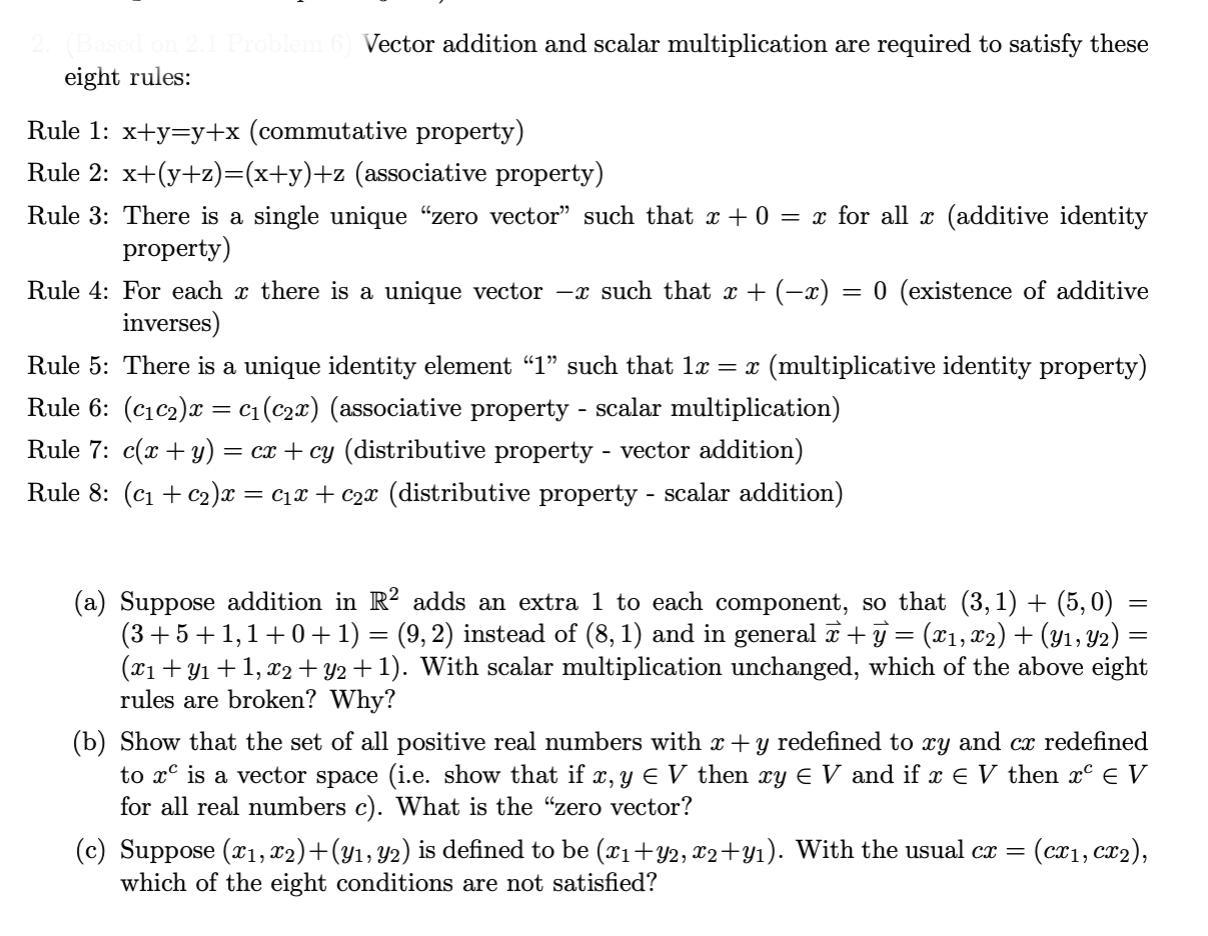Answered step by step
Verified Expert Solution
Question
1 Approved Answer
(Based on 2.1 Problem (6) Vector addition and scalar multiplication are required to satisfy these eight rules: Rule 1: x+y=y+x (commutative property) Rule 2:

(Based on 2.1 Problem (6) Vector addition and scalar multiplication are required to satisfy these eight rules: Rule 1: x+y=y+x (commutative property) Rule 2: x+(y+z)=(x+y)+z (associative property) Rule 3: There is a single unique "zero vector" such that x + 0 = x for all (additive identity property) Rule 4: For each x there is a unique vector such that x + (x) = 0 (existence of additive inverses) Rule 5: There is a unique identity element 1 such that 1x = x (multiplicative identity property) Rule 6: (cc)x= c(cx) (associative property - scalar multiplication) Rule 7: c(x + y) = cx + cy (distributive property - vector addition) Rule 8: (C+C)x= cx + cc (distributive property - scalar addition) (a) Suppose addition in R adds an extra 1 to each component, so that (3,1) + (5,0) (3 +5+1,1+0+ 1) = (9, 2) instead of (8,1) and in general + y = (x, x2) + (y, Y2) (x+Y+1, x2 + y2 + 1). With scalar multiplication unchanged, which of the above eight rules are broken? Why? (b) Show that the set of all positive real numbers with x + y redefined to ry and cx redefined to x is a vector space (i.e. show that if x, y V then xy V and if x = V then x V for all real numbers c). What is the "zero vector? (c) Suppose (x1, x2)+(y, y2) is defined to be (x+y2, x2+y). With the usual cx = = (cx1, cx2), which of the eight conditions are not satisfied?
Step by Step Solution
★★★★★
3.47 Rating (160 Votes )
There are 3 Steps involved in it
Step: 1

Get Instant Access to Expert-Tailored Solutions
See step-by-step solutions with expert insights and AI powered tools for academic success
Step: 2

Step: 3

Ace Your Homework with AI
Get the answers you need in no time with our AI-driven, step-by-step assistance
Get Started


